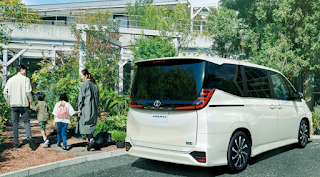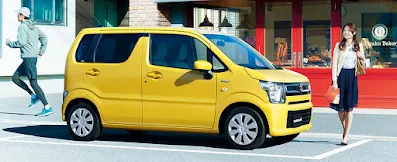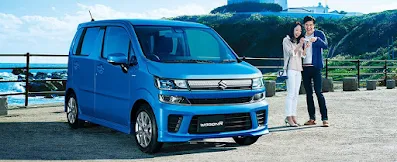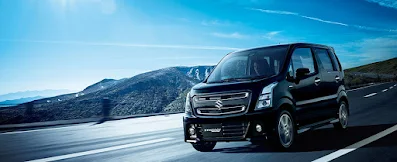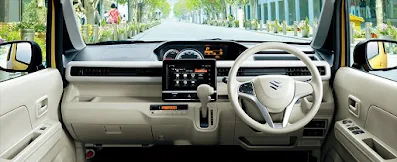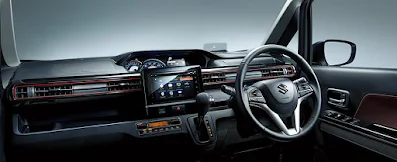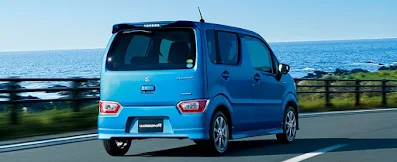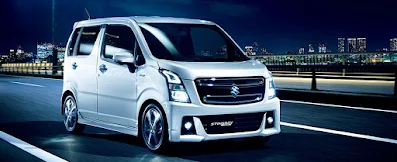Toyota kicks off the year 2022 with the all-new, fourth-generation Noah and Voxy minivans, the latest generation of Toyota's best-selling, family-oriented minivans that promise to be the most enjoyable, most comfortable, and the most practical minivans ever made, not to mention being the most stylish minivans of this decade of the new normal.
 |
| 2023 Toyota Noah |
 |
| 2023 Toyota Voxy |
The fourth-generation Noah and its stylish derivative known as the Voxy, which starts at 2.67 million Yen plus additional costs, are all-new from the ground up because these minivans are now running on the TNGA platform to adapt themselves to the new normal. More with that later on but first, the design.
Starting on the Noah, the exterior design looks vaguely similar to the late Mazda Biante of the distant past, probably because of the massive front grille that spoils its family-oriented appeal but that's just the start of the story because, for the first time, the new model ditched the Noah emblem in favor of the Toyota logo, akin to the current-generation Harrier crossover. The Voxy, meanwhile, is a mixture of swagger and flatter that leaves observers confused, mainly because of the combination of the massive front grille, split headlamps, and foglamps reminiscent of the Arena logo, just like the one found on the Kia K8.
 |
| 2023 Toyota Noah interior |
 |
| 2203 Toyota Voxy interior |
Now, let's talk about the new interior. Beginning on the driver's side, the dashboard saw the climate control repositioned below the touch screen while the gear lever, which takes charge of its CVT, gets a redesign for this generation. Although nothing special, it still works as most minivans should and is user-friendly as usual. The one thing to watch out for is its T-Connect service with the "Hey, Toyota" voice control feature that works like Amazon Alexa. This spells trouble for those sitting in its sweet spot. On the plus side, there's wi-fi connectivity on it.
In terms of space, because it's wider and higher than the previous model, it's surprisingly roomier than ever, which isn't too shabby for a three-row minivan of its size. The seven-seater variant is the easiest to live with because of its easy access to the third-row seats, enough to hit its sweet spot of course. Best of all, you can even spec it with ottoman seats, which is perfect for those who can't afford an Alphard. The eight-seater variant, meanwhile, is the ultimate expression of a family carrier but it's guaranteed to give you some muscle aches while trying to get through the third-row seats when Mom and Dad stuffed the second-row seats with ISOFIX child seats. Ouch.
For added convenience, the all-new Noah and Voxy minivans received a Toyota-first Power Back Door Switch, which is located on one of the slides, and the world's first Free Stop Back Door that can be manually held in the middle position.
Like the previous generation, there are two powertrains to choose from. The M20A-FKS 2.0L Dynamic Force engine with Direct Shift-CVT produces 170PS of power, 202Nm of torque, and up to 15.1kmpl of fuel economy. The hybrid variant, meanwhile, uses a combination of a 2ZR-FXE 1.8L petrol engine, CVT, an electric motor (one for FF, two for 4WD), and a Li-ion battery. This setup promises 23.4kmpl of fuel economy based on WLTC Mode standards, which is surprisingly more than the Nissan Serena e-Power as expected.
With the new TNGA platform, front MacPherson struts, rear coil springs, ventilated disc brakes, and electric power steering, the all-new Noah and Voxy feel better to drive than the previous models, although they feel regular as usual. Nothing to be excited about. Just a minivan doing minivan things. Speaking of minivan things, the all-new Noah and Voxy come with Toyota Safety Sense, a suite of advanced driving aids, as well as the Advanced Park feature. It even features the Toyota-first Remote Park feature that can be remotely parked by using a smartphone.
And there you have it. The all-new Noah and Voxy minivans are now officially the best evolution of Toyota's best-selling family-oriented minivans yet because of their spacious interior and heaps of tech. Although the designs are rather bourgeois and questionable, they're worth trying out. The year 2022 will see Japan's big three launching new family-oriented minivans and Toyota is the first to blow the war trumpet with the arrival of the all-new Noah and Voxy minivans. With Toyota making its first move, how will Honda and Nissan respond to it?
Photo: Toyota Motor Corporation

